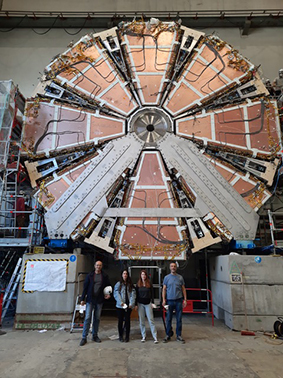The ATLAS New Small Wheel A is completed at CERN

Colloquium: Prof. Yannis Semertzidis, “The new muon g-2 results from Fermilab: Physics and High Precision implications”
31 May 2021
Colloquium: Prof. Yannis Semertzidis, “The storage ring proton electric dipole moment method at 10^{-29} e-cm level using a hybrid-symmetric lattice”
11 June 2021
The ATLAS New Small Wheel (NSW) muon detector upgrade program is currently the largest upgrade program in the LHC experiments in order to meet the extreme requirements of Phase II of the High Luminosity LHC.
Friday 28/05/2021 was a great day for the NSW project as one of the two wheels (Wheel A) was completed and will soon replace the Small Wheels detectors that are currently covering the endcaps of ATLAS detector.
Each Wheel consists of 8 small and 8 large sectors. Each of them consists of 8 layers of small strip Thin Gap Chambers (sTGC) detectors and 8 levels of Micromegas detectors, which will be used both for triggering and tracking purposes in extreme particle flows and radiation.
The NCSR Demokritos group has been very active in the NSW Upgrade Project. Main fields: 1) The design and construction of a thousand cards (repeaters) in collaboration with Hellenic Industry, 2) The construction of an integrated trigger system (sTGC Trigger Slice test bench) for trigger’s implementation in NSW, 3) It is responsible for validate and deliver the sTGC trigger system4) Participates in the development of firmware for the trigger system, 5) Has a leading role in the development of software related to both NSW and the Muon system, 6) Has a very active participation in the construction and assembly of the sTGC detectors.
Wheel A is to be transported to its final destination, the ATLAS experiment, in mid-July 2021, while Wheel C is expected to be ready to be transported to the experiment in September 2021.

